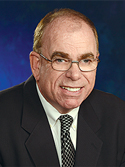
Who has the most dangerous jobs in America? Police officers? Fire fighters? Loggers?
How about healthcare workers? Or more specifically, healthcare workers who happen to be women?
Women in healthcare tend to be assailed with a regularity that would cause most other employees to fill out police reports. A survey of nurses released last year found that nearly 80% had been assailed on the job in the prior 12 months.
In fact, attacks on nurses account for almost 70% percent of all nonfatal workplace assaults resulting in days away from work, according to the Bureau of Labor Statistics.
“It is unacceptable that the people who dedicate their lives to caring for our loved ones often work in fear of injury or death,” said Assistant Secretary of Labor for Occupational Safety and Health David Michaels, PhD, MPH.
Except for auto accidents, murder is the most likely way a woman will die at work. That risk is nearly three times higher for women than for men (21% to 8%), the BLS notes.
Under the Occupational Safety and Health Act of 1970, employers are responsible for providing safe and healthful workplaces. That requirement might come as a surprise to many women in healthcare, especially those who regularly find themselves being hit, kicked, scratched, harassed and threatened.
For now, no federal law mandates workplace protections against violence. But change is in the air. California, Connecticut, Illinois, Maryland, New Jersey and Oregon now require employers to run workplace violence educational programs. New York has a similar requirement, but only for public employers.
And Massachusetts might soon be putting additional protections in place. There, a pending measure calls for healthcare employers to do risk assessments of factors that put employees at risk of workplace assaults. Under the bill, facilities would also have to create an in-house crisis response team.
Some in the field will undoubtedly see these developments as more regulatory intrusion. I can certainly understand such concern. Long-term care is, after all, one of the most heavily-regulated fields to be found.
But here’s the thing: providing healthcare is an extremely hazardous occupation. Getting beat up or worse while on duty should not be one of those hazards. Yet all too often, it is.
Is that acceptable?
John O’Connor is the Editorial Director of McKnight’s.




